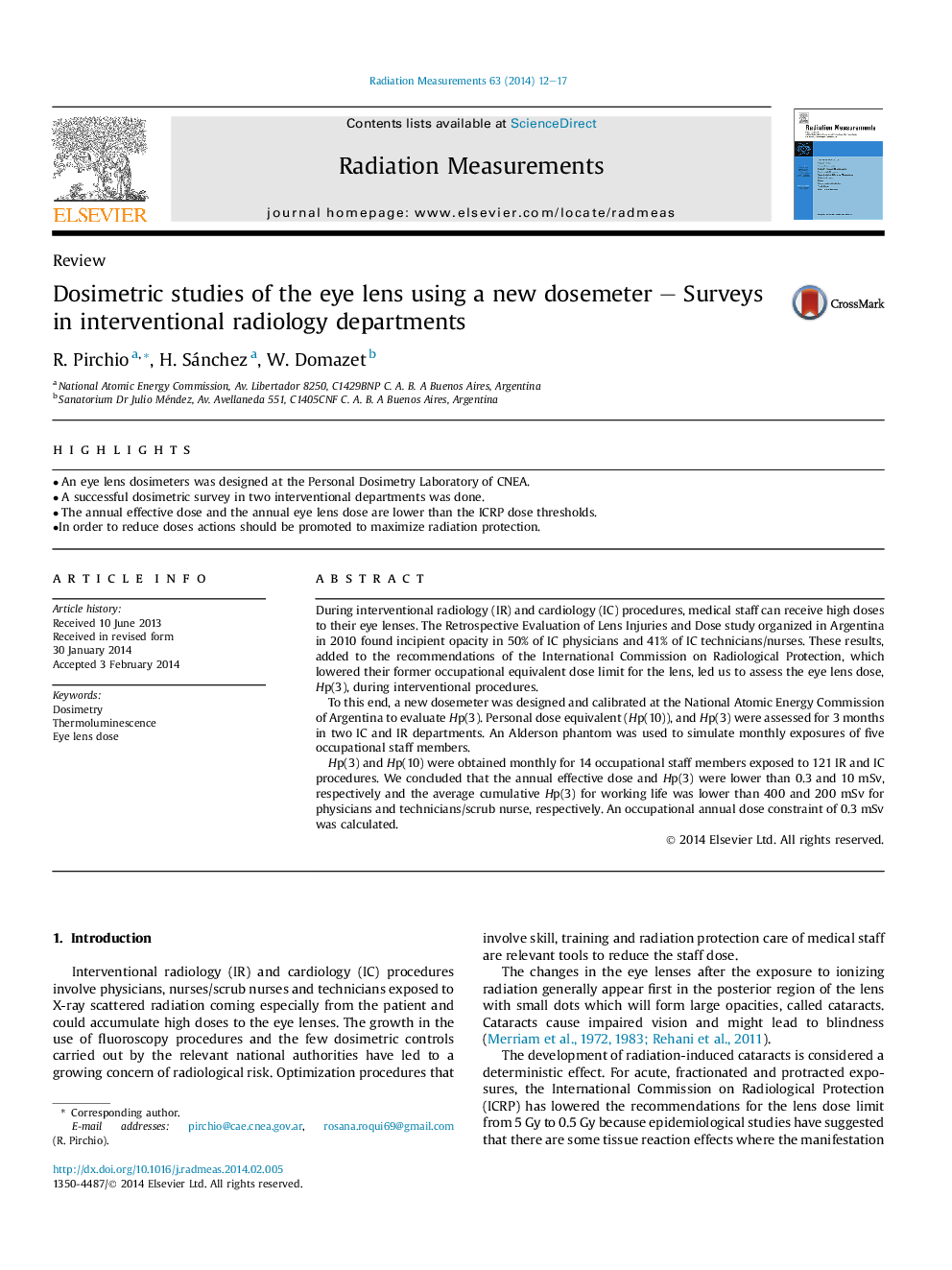| Article ID | Journal | Published Year | Pages | File Type |
|---|---|---|---|---|
| 1880795 | Radiation Measurements | 2014 | 6 Pages |
•An eye lens dosimeters was designed at the Personal Dosimetry Laboratory of CNEA.•A successful dosimetric survey in two interventional departments was done.•The annual effective dose and the annual eye lens dose are lower than the ICRP dose thresholds.•In order to reduce doses actions should be promoted to maximize radiation protection.
During interventional radiology (IR) and cardiology (IC) procedures, medical staff can receive high doses to their eye lenses. The Retrospective Evaluation of Lens Injuries and Dose study organized in Argentina in 2010 found incipient opacity in 50% of IC physicians and 41% of IC technicians/nurses. These results, added to the recommendations of the International Commission on Radiological Protection, which lowered their former occupational equivalent dose limit for the lens, led us to assess the eye lens dose, Hp(3), during interventional procedures.To this end, a new dosemeter was designed and calibrated at the National Atomic Energy Commission of Argentina to evaluate Hp(3). Personal dose equivalent (Hp(10)), and Hp(3) were assessed for 3 months in two IC and IR departments. An Alderson phantom was used to simulate monthly exposures of five occupational staff members.Hp(3) and Hp(10) were obtained monthly for 14 occupational staff members exposed to 121 IR and IC procedures. We concluded that the annual effective dose and Hp(3) were lower than 0.3 and 10 mSv, respectively and the average cumulative Hp(3) for working life was lower than 400 and 200 mSv for physicians and technicians/scrub nurse, respectively. An occupational annual dose constraint of 0.3 mSv was calculated.
